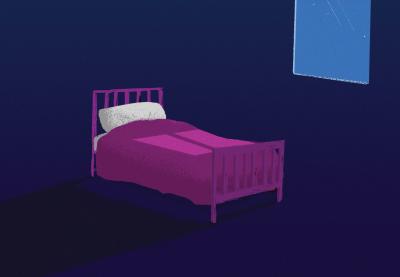Most teachers want to illuminate prejudices and show students how to overcome biased thinking. I count myself among that group.
Still, when my 9-year-old son recently said he wanted to play the flute in the school band, a flood of childhood memories swept over me, painful experiences that shaped my thinking about gender and sexual orientation. “The flute is a girl’s instrument,” I was shocked to hear my mind say. And then, perhaps even more troubling, “It’s a gay instrument.”
I recently shared this experience with my students because I wanted them to see the way my biases took me by surprise, how they had been formed by my childhood, and how I am trying to remove them from my thinking. Why? Because, to me, it is important to be honest about the fact that we all hold biases, and that we all must fight to overcome them. Being a teacher gives me an opportunity to be transparent about both of these difficult processes.
We exhibit and teach biases even when we don’t mean to.
As I also told my students, the flute conversation was not the first time my son exposed my perceptions about gender norms. When he got his first “big-boy” bed, my wife and I told him we would paint it any color he wanted. He did not hesitate for a single second. “Pink!” he said this with a huge grin, and the unbridled enthusiasm of a little kid being given the freedom to make a decision all his own.
When I told my students this story, they laughed. Their laughter indicated that gender bias already lurks within them.
“Pink is his favorite color,” I explained. I went on to say how shocked I am at the number of people who feel they need to weigh in on this preference. Friends and family members, people I believe to be intelligent and open-minded, roll their eyes and crack jokes. “I make a habit of challenging anyone who raises an eyebrow,” I told my class. “‘What do you think this is, the 1950s?’ I say. ‘It is a color. He likes the way it looks.’”
My students nod. Yeah, their eyes say, that is messed up.
This is where the lesson begins. They think this is a story about my being a better person than that. They think it is a story about an enlightened father blazing the trail for his son to safely embrace who he is. But it’s not. Because then I confess what I told him: “Any color other than pink.”
In that moment, my better self—a man who strives to battle stereotypes, who does laundry and irons clothes, who took tap dancing lessons as a kid—was nowhere to be found.
Rather than standing up against a stereotype, I embraced it. In my attempt to protect my son, I became the one who belittled him. Despite my intentions, I was the person telling him that what he naturally liked was wrong. I was teaching him bias.
Why is it so hard to shed our biases?
I was not good at sports when I was young, but I could knock out a solid triple-time step in tap shoes. I spent my summers at theater camp. I did not feel like I fit in with the rest of the boys, who were choosing activities more aligned with society’s gender norms. I got labeled a “faggot” when I started junior high. I remember sitting in class as a kid poked my butt with a ruler. “You like that, faggot?” he hissed.
It is important my students hear that story. That bad experience shaped my beliefs about fairness and individuality. But, clearly, I still harbor prejudices about the color pink and about certain activities. That revelation is sad and shocking to me. It’s also a perfect opportunity to seize upon a teachable moment for all of us.
The little-kid version of myself keeps popping up to protect my son from the experiences I had. I ask my students why I would do this. They say that biases are rooted in fear. “All Muslims being labeled terrorists,” one student volunteers when I ask for examples. “Black people being seen as criminals,” says another.
Now we’ve arrived at the actual lesson: Unless we stand up to the systems that allow these fears to persist, biases keep us laboring under false, harmful assumptions. They limit us and they cause us to hurt the people around us. And they keep us afraid.
Let students see us combat our biases.
Although I struggled with the urge to encourage my son to choose another instrument, I told him the flute was great. I told him it was a beautiful instrument. I wished him luck at tryouts.
When he came home and told me he wanted to play the trombone instead, I had mixed feelings. He had tried the flute. “I hated it,” he said, and then he ran off to play with his brother.
I was relieved, but also a little disappointed.
We exhibit and teach biases even when we don’t mean to.
I was relieved that he would be less of a target for the type of kids who’d gone after me when I was little and insecure. And I was relieved that he decided against the flute because he didn’t like it, not because I sent him the message that his interest made him less of a boy. But I was disappointed he would not have the opportunity to help redefine the flute as an instrument anyone could play.
Still, I use my role as a classroom teacher to help disrupt gender norms whenever I can. I tell my students about how I enjoy arranging flowers in a vase for our kitchen table, and that I am every bit the home decorator my wife is. I tell them I love listening to Taylor Swift and Beyoncé as much as watching ice hockey matches and baseball games. I tell them that I shower my kids with hugs. Those are not things women like or things men like. They are things their teacher likes.
Recently, while I was coloring with my son, he told me kids at school were teasing him. When I asked him why, he said it was because he likes the color pink. “Well, that’s silly,” I said, reaching for the pink crayon. “Pink is red mixed with white. I like red. I like white. I can’t like them mixed together because I am a boy? That makes no sense.” He laughed.
“Cool pink monster,” he said. Damn right.
I tell my students this story as well. Not as many smile or laugh this time.

